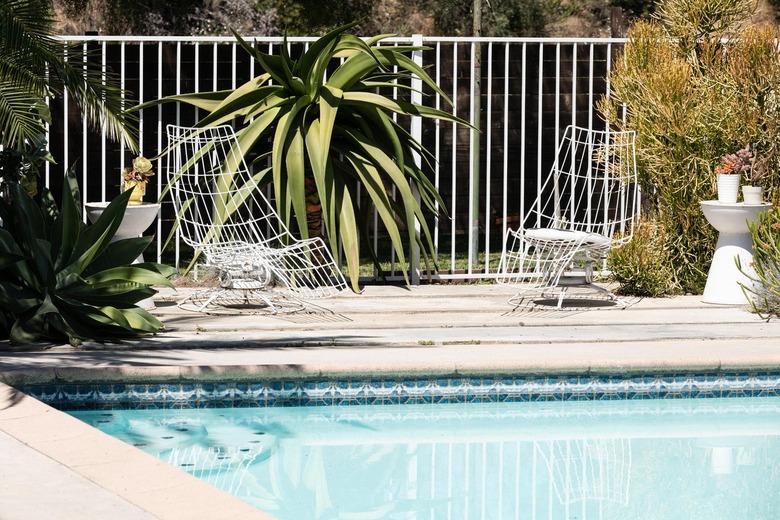How To Add Copper Sulfate To Pools
We may receive a commission on purchases made from links.
Copper sulfate (CuSO4) is an inorganic compound used in agriculture to control insects, plant roots, snails, bacteria, and fungi, and it's one of the best pool algaecides around. Because of the presence of copper, the compound has a characteristic blue color (just like octopus blood, which is copper-based). It comes in granular form and is sometimes called bluestone.
Because it kills living things other than algae (including fish), copper sulfate isn't recommended for ponds. Swimming pools are different, though. Besides people, pools aren't supposed to have living things in them — especially algae — so copper sulfate is commonly sold by pool suppliers as a sanitizing agent. It's generally safe for swimmers, but because copper sulfate doesn't evaporate, it should be used sparingly. High concentrations resulting from repeated use can cause staining of the pool liner, the submerged pool equipment, and possibly the skin of anyone who stays in the water too long.
Balance the Water Before Adding Copper Sulfate
Balance the Water Before Adding Copper Sulfate
Copper sulfate works best when the pH of the pool water is in the range it should be, which is between 7.2 and 7.6. This ensures that the chlorine in the pool will be effective as a sanitizing agent, which in turn makes the copper sulfate more effective as an algaecide. If the pH is too high, lower it by adding muriatic acid or dry acid (sodium bisulfate), and if it's too low, raise it with sodium carbonate (soda ash) or sodium bicarbonate (baking soda).
The total alkalinity (TA) of the water, which isn't the same as pH, is also important. It's a measure of all the alkaline substances dissolved in the water, and when it's in the proper range, which is between 80 and 120 parts per million, it acts as a buffer on pH, preventing it from rising or falling drastically. Copper sulfate shouldn't be added to the pool water if the TA is lower than 50 ppm or higher than 200 ppm. Adding soda ash is the best way to raise TA, and if you need to lower TA, add dry acid.
Measure According to Pool Volume
Measure According to Pool Volume
The recommended amount of copper sulfate crystals or similar treatment can vary according to the composition of the product you use. For example, AquaVet is a commercial product consisting of copper sulfate pentahydrate crystals — the most common form — and the recommended dosage is 1 tablespoon per 1,000 gallons of pool water to achieve the ideal concentration of 1 ppm.
To determine the volume of your pool, calculate the area in square feet using whatever geometrical formula applies to the shape (for a rectangle, you measure the length by the width), multiply that by the depth of the water in feet to get the volume in cubic feet and then multiply by 7.5 to convert to gallons. For example, the area of a 20 x 40-square-foot rectangular pool is 800 square feet, and if the water depth is 5 feet, the pool holds 4,000 cubic feet — or 30,000 gallons — of water. In this example, you would add 30 tablespoons of AquaVet.
Adding Copper Sulfate to the Water
Adding Copper Sulfate to the Water
Because copper sulfate comes in granules, it should be dissolved in water before you add it to the pool water. If you don't do this, you're inviting staining and uneven distribution of the sanitizer. Pour the crystals into a bucket and add enough water to completely dissolve them and create a pourable and sprayable liquid.
You could pour the copper sulfate solution into the pool by walking around the perimeter and adding it incrementally, but a better way to ensure uniform distribution and to kill all the algae is to spray it. Pour the solution into a garden sprayer and walk around the pool, spraying every square inch of the surface of the water. Be sure to use the entire mixture.
You should treat pool water with copper sulfate only when the water is at a temperature of 60 degrees Fahrenheit or higher because copper sulfate doesn't work well in cold water. Wait a few hours for the solution to disperse in the water before swimming.
